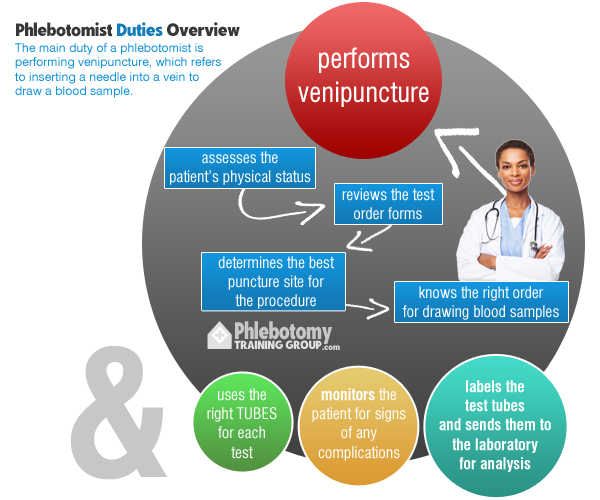3 Simple Techniques For Northeast Medical Institute - New Haven Campus Phlebotomy Course & Cna Class
3 Simple Techniques For Northeast Medical Institute - New Haven Campus Phlebotomy Course & Cna Class
Blog Article
Northeast Medical Institute - New Haven Campus Phlebotomy Course & Cna Class Fundamentals Explained
Table of ContentsThe smart Trick of Northeast Medical Institute - New Haven Campus Phlebotomy Course & Cna Class That Nobody is Talking AboutThe 9-Second Trick For Northeast Medical Institute - New Haven Campus Phlebotomy Course & Cna ClassOur Northeast Medical Institute - New Haven Campus Phlebotomy Course & Cna Class DiariesHow Northeast Medical Institute - New Haven Campus Phlebotomy Course & Cna Class can Save You Time, Stress, and Money.Rumored Buzz on Northeast Medical Institute - New Haven Campus Phlebotomy Course & Cna ClassNortheast Medical Institute - New Haven Campus Phlebotomy Course & Cna Class Fundamentals Explained
The use of such devices should be gone along with by various other infection prevention and control practices, and training in their usage. Not all security devices are applicable to phlebotomy. Prior to selecting a safety-engineered gadget, individuals must completely investigate available devices to establish their proper use, compatibility with existing phlebotomy practices, and effectiveness in safeguarding personnel and clients (12, 33).For settings with reduced sources, expense is a motoring aspect in procurement of safety-engineered devices - Phlebotomy Courses. Where safety-engineered tools are not offered, knowledgeable use a needle and syringe is acceptable. Unintentional direct exposure and particular information about an incident must be recorded in a register. Support services must be promoted for those who go through unexpected direct exposure.
In the blood-sampling space for an outpatient department or facility, offer a comfortable reclining couch with an arm rest.
The Best Strategy To Use For Northeast Medical Institute - New Haven Campus Phlebotomy Course & Cna Class
Guarantee that the indicators for blood sampling are clearly defined, either in a created protocol or in recorded directions (e.g. in a lab form). Accumulate all the equipment needed for the procedure and area it within risk-free and easy reach on a tray or cart, guaranteeing that all the things are clearly visible.
Where the person is grown-up and aware, adhere to the actions outlined listed below. Present on your own to the patient, and ask the individual to mention their full name. Examine that the research laboratory kind matches the client's identification (i.e. match the person's information with the lab type, to make sure accurate recognition). Ask whether the patent has allergies, fears or has ever before collapsed during previous injections or blood attracts.
Make the individual comfy in a supine position (when possible). Area a clean paper or towel under the patient's arm. Go over the test to be carried out (see Annex F) and acquire spoken authorization. The patient has a right to reject a test any time before the blood sampling, so it is crucial to guarantee that the individual has recognized the procedure.
Northeast Medical Institute - New Haven Campus Phlebotomy Course & Cna Class for Beginners
Expand the individual's arm and examine the antecubital fossa or forearm. Situate a blood vessel of a good size that is visible, straight and clear. The representation in Section 2.3, shows typical placements of the vessels, however many variations are feasible. The mean cubital blood vessel exists in between muscles and is normally the most simple to pierce.
DO NOT place the needle where capillaries are drawing away, because this raises the possibility of a haematoma. The blood vessel needs to be noticeable without applying the tourniquet. Locating the vein will assist in determining the proper dimension of needle. Apply the tourniquet regarding 45 finger widths over the venepuncture website and re-examine the capillary.
Samplings from central lines lug a risk of contamination or wrong lab test outcomes. It is appropriate, yet not suitable, to attract blood specimens when very first introducing an in-dwelling venous gadget, before attaching the cannula to the intravenous fluids.
The 25-Second Trick For Northeast Medical Institute - New Haven Campus Phlebotomy Course & Cna Class
Failing to permit enough get in touch with time increases the risk of contamination. DO NOT touch the cleaned up website; in specific, DO NOT position a finger over the blood vessel to guide the shaft of the revealed needle.
Ask the person to create a hand so the veins are more famous. Go into the capillary promptly at a 30 level angle or much less, and remain to introduce the needle along the blood vessel at the most convenient angle of entry - CNA Training. Once enough blood has actually been accumulated, launch the tourniquet BEFORE taking out the needle
Northeast Medical Institute - New Haven Campus Phlebotomy Course & Cna Class - An Overview
Withdraw the needle carefully and use gentle pressure to the site with a tidy gauze or dry cotton-wool ball. Ask the person to hold the gauze or cotton wool in location, with the arm extended and increased. Ask the person NOT to bend the arm, since doing so creates a haematoma.
:max_bytes(150000):strip_icc()/Primary_Image-b2e24c37575f48279cff673865d3853c.jpg)
Northeast Medical Institute - New Haven Campus Phlebotomy Course & Cna Class Can Be Fun For Anyone
Do not push the syringe bettor because extra stress increases the threat of haemolysis. Where feasible, maintain the tubes in a rack and content relocate the rack towards you. Infuse downwards right into the appropriate coloured stopper. DO NOT eliminate the stopper since it will certainly release the vacuum cleaner. If the sample tube does not have a rubber stopper, inject extremely gradually into the tube as lessening the pressure and velocity used to move the specimen decreases the threat of haemolysis.

Report this page